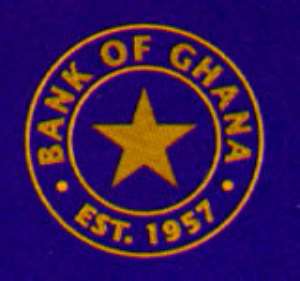
Bank of Ghana has forecast headline inflation to close the year at 17 percent.
The Central Bank's forecast indicates the continued ease in general price levels which began in July this year.
Inflation rose consistently from the beginning of the year to its highest point of 18.41 percent in June. The high inflationary trend was attributable to world crude oil and food price increases that hit the world during the period.
However, inflation has since been on a downward trend, to 18.3 percent in July, and 18.1 percent in August and further to 17.89 percent in September.
With the recent declines in world crude oil prices, expectations for general price levels have eased, amid predictions that prices would fall further in line with the global recession.
Selling currently at below US$60 per barrel, the Governor of the Bank of Ghana who is also the Chairman of the Monetary Policy Committee (MPC), Dr. Paul Acquah is optimistic that the world crude oil price developments would accrue positive gains for the local economy in the coming months.
This is expected in the form of reduction in ex-pump prices of domestic petroleum products and falling price of imports, both for industrial and consumer use.
In the circumstances, the MPC decided to maintain the prime rate at 17.0 percent.
The prime rate began the year at 13.5 percent in January, and rose to 14.25 percent in March and further to 16.0 percent in July. Inflationary pressures forced the rate up again by 100 basis points to 17 percent in July.
At the July review, the prime rate was pegged below headline inflation for the month, which stood at 18.3 percent. Since the prime rate is not expected to change until January next year, the prime rate and headline inflation are expected to close the year at the same rate of 17 percent.
Interest rate developments have been in line with inflationary trends. The benchmark 91-day Treasury bill rate increased to 24.58 percent in the third quarter from 16.32 percent in the second quarter.
The 182 -day Treasury bill rate similarly rose sharply in the third quarter to 26.04 percent, continuing the uptrend from the first quarter. The one-year note and the two-year fixed rate note followed similar patterns, ending at 20 percent and 21 percent respectively.
Average base rate quotations by the banks was revised upwards by337 basis points to 25.63 percent in the third quarter, in the range of 19.5 and 27.8 percent,
Similarly, average lending rates were moved upward by 202 basis points in the third quarter to 26.38 percent, within the range of 15 and 34.0 percent.
Gross international reserves rate note followed similar patterns, ending at 20 percent'and 21 percent respectively.
Average base rate quotations by the banks was revised upwards by337 basis points to 25.63 percent in the third quarter, in the range of 19.5 and 27.8 percent.
Similarly, average lending rates were moved upward by 202 basis points in the third quarter to 26.38 percent, within the range of 15 and 34.0 percent.
Gross international reserves position at the end of September was US$2,270.2 million. This compares with US$1, 811.34 million in September 2007 and represents 2.3 months cover of imports.
Developments in the nominal bilateral exchange rates of the cedi against the three core currencies the US dollar, the pound sterling and the euro show that for January-September 2008, the cedi depreciated, cumulatively, against all three core currencies by 15.8, 6.2 and 14.0 percent respectively.




 Akufo-Addo commissions Phase II of Kaleo solar power plant
Akufo-Addo commissions Phase II of Kaleo solar power plant
 NDC panics over Bawumia’s visit to Pope Francis
NDC panics over Bawumia’s visit to Pope Francis
 EC blasts Mahama over “false” claims on recruitment of Returning Officers
EC blasts Mahama over “false” claims on recruitment of Returning Officers
 Lands Minister gives ultimatum to Future Global Resources to revamp Prestea/Bogo...
Lands Minister gives ultimatum to Future Global Resources to revamp Prestea/Bogo...
 Wa Naa appeals to Akufo-Addo to audit state lands in Wa
Wa Naa appeals to Akufo-Addo to audit state lands in Wa
 Prof Opoku-Agyemang misunderstood Bawumia’s ‘driver mate’ analogy – Miracles Abo...
Prof Opoku-Agyemang misunderstood Bawumia’s ‘driver mate’ analogy – Miracles Abo...
 EU confident Ghana will not sign Anti-LGBTQI Bill
EU confident Ghana will not sign Anti-LGBTQI Bill
 Suspend implementation of Planting for Food and Jobs for 2024 - Stakeholders
Suspend implementation of Planting for Food and Jobs for 2024 - Stakeholders
 Tema West Municipal Assembly gets Ghana's First Female Aircraft Marshaller as ne...
Tema West Municipal Assembly gets Ghana's First Female Aircraft Marshaller as ne...
 Dumsor is affecting us double, release timetable – Disability Federation to ECG
Dumsor is affecting us double, release timetable – Disability Federation to ECG
